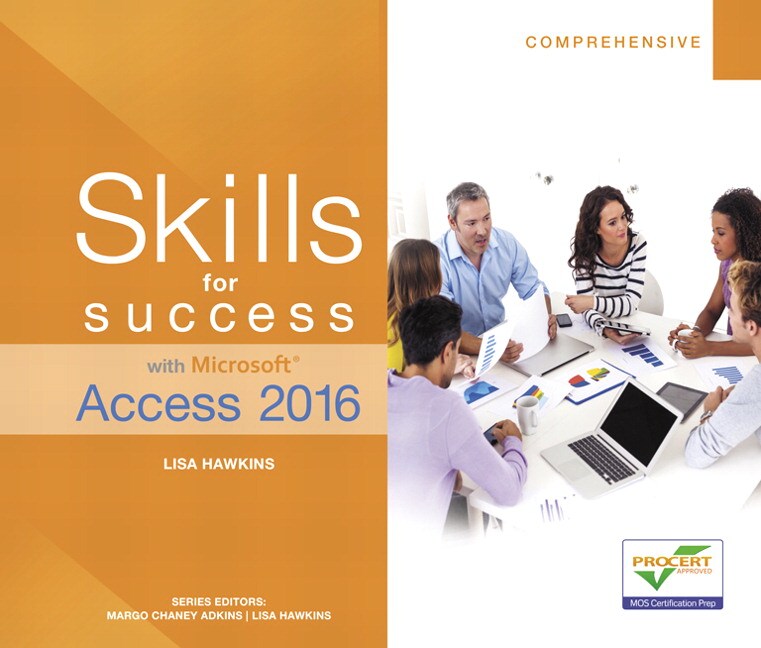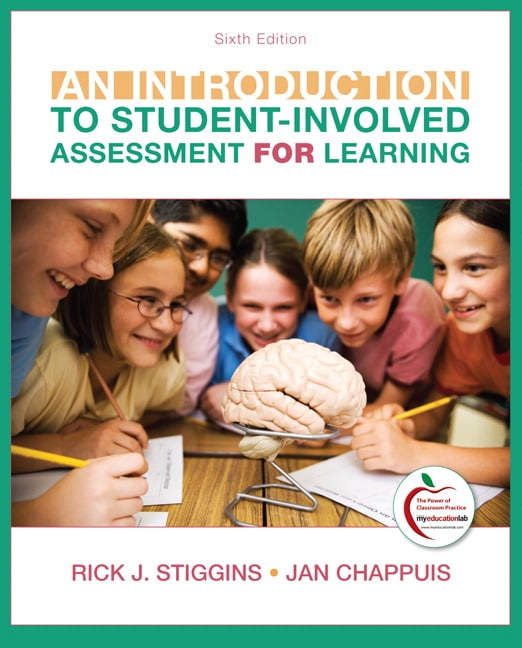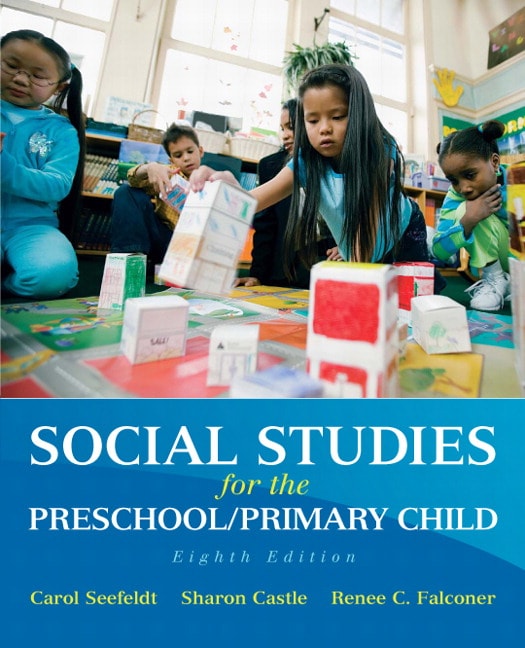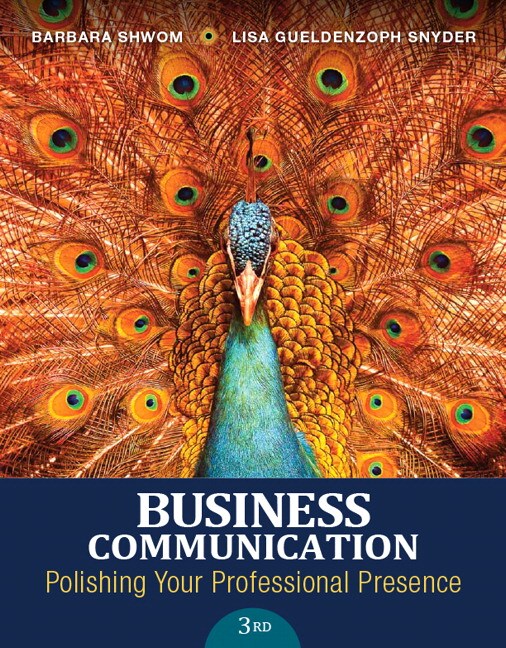Table of Contents
Brief Contents
Part I Introduction to Student-Involved Assessment FOR Learning
Chapter 1 Classroom Assessment for Student Success
Chapter 2 Understanding Why We Assess
Chapter 3 Defining Achievement Standards for Assessment
Chapter 4 Designing Quality Assessments
Part II Understanding Assessment Methods
Chapter 5 Selected Response Assessment
Chapter 6 Essay Assessment
Chapter 7 Performance Assessment
Chapter 8 Personal Communication as Assessment
Chapter 9 Assessing Dispositions
Part III Communicating Assessment Results
Chapter 10 Managing and Communicating Achievement Information
Chapter 11 Report Cards: Assessments OF Learning
Chapter 12 Portfolios and Conferences Involve Students in Communication
Chapter 13 Communicating with Standardized Test Scores
Appendix A Derivation of Common Norm-Referenced Scores
Appendix B Rubrics for Evaluating Assessment Quality
References
Index
Detailed Contents
Part I Introduction to Student-Involved Assessment FOR Learning
Become a Reflective Learner
Keep a Journal to Watch Yourself Grow
Form a Learning Team or Study Group
Companion Website
Chapter 1 Classroom Assessment for Student Success
Chapter Focus
Our Classroom Assessment Responsibilities
A Story of Assessment for Student Success
Success from the Student’s Point of View
The Keys to Success
Some Students Aren’t So Lucky
Other Potential Problems
Anticipating and Avoiding Assessment Problems
Understanding Assessment Validity
Understanding Assessment Reliability
The Changing Role of Assessment
Your Assignment in Standards-Driven Schools
Important Benefits to You
A Fundamental Assessment Belief
Assessment and Student Motivation
Guides to Valid and Reliable Assessment
Guiding Principle 1: Classroom Assessments Can Both Promote and Verify Student Learning
Guiding Principle 2: Clear and Appropriate Achievement Targets Are Essential
Guiding Principle 3: Accurate Classroom Assessment Is Essential
Guiding Principle 4: Sound Assessments Communicate Results Effectively
The Power of Student Involvement
Summary: The Importance of Sound Assessment
Practice with Chapter 1 Ideas
Chapter 2 Understanding Why We Assess
Chapter Focus
The Big Assessment Picture
Classroom Users and Uses
Program-Level Users
Institutional- or Policy-Level Users
Generalizations Across Users and Uses
Therefore, the Keys to Assessment FOR Learning
Summary: Assessment for Many Purposes
Practice with Chapter 2 Ideas
Chapter 3 Defining Achievement Standards for Assessment
Chapter Focus
Validity from a Different Perspective
Defining Achievement Targets
The Benefits of Clear and Appropriate Targets
Control Over Your Professional Success
Student Academic Self-Efficacy
Greater Efficiency
Accurate Classroom Assessments
Sources of Information About Achievement Standards
State and Local Standards
Your Local Written Curriculum
Professional Networking
Types of Achievement Targets
Knowing and Understanding Targets
Reasoning Targets
Performance Skill Targets
Product Development Targets
Dispositional Targets
Summary of Targets
The Critical Standards—Classroom Targets Connection
Deconstructing Standards
Student-Friendly Targets
Summary: Clear Targets Are Essential for Sound Assessment
Practice with Chapter 3 Ideas
Chapter 4 Designing Quality Assessments
Chapter Focus
The Assessment Options
Selected Response Assessment
Essay Assessment
Performance Assessment
Personal Communication as Assessment
Keep the Options in Balance
Design Feature 1: Matching Methods with Targets
Important Things to Remember
Assessing Knowledge and Understanding
Assessing Reasoning Proficiency
Assessing Mastery of Performance Skills
Assessing Proficiency at Creating Products
Assessing Dispositions
The Other Key Features of Quality Assessments
Design Feature 2: Build the Assessment of Quality Ingredients
Design Feature 3: Sample Achievement Appropriately
Design Feature 4: Minimize Bias
Assessment FOR Learning
Summary: A Vision of Excellence in Classroom Assessment
Practice with Chapter 4 Ideas
Part II Understanding Assessment Methods
Chapter 5 Selected Response Assessment
Chapter Focus
The Most Traditional Assessment Methods
The Foundations of Assessment Quality
Matching Methods to Targets
Assessing Knowledge Mastery
Assessing Reasoning
Assessing Performance Skills
Assessing Products
Summary of Target Matches
The Steps in Assessment Development
Step 1: Preparing a Blueprint
Step 2: Selecting the Specific Material to Assess
Additional Thoughts on Steps 1 and 2
Step 3: Building Test Items from Propositions
Fine Tuning Assessment Applications
Mix Formats
Use Interpretive Exercises
Format the Test Carefully
Work Backwards to Verify Test Quality
Some Final Issues and Reminders
Barriers to Sound Selected Response Assessment
Student Involvement in Selected Response Assessment
Summary: Productive Selected Response Assessment
Practice with Chapter 5 Ideas
Chapter 6 Essay Assessment
Chapter Focus
Assessment Based on Subjective Judgment
Essay Assessment at Work in the Classroom
The Foundations of Assessment Quality
When to Use Essay Assessment
Understanding Reliability: The Role of Judgment in Scoring
Matching Method to Targets
Assessing Knowledge and Understanding
Assessing Reasoning
Assessing Performance Skills
Assessing Product Development Capabilities
Summary of Target Matches
Developing Essay Assessments
Practice Exercise
Assessment Planning
Exercise Development
Developing Essay Scoring Procedures
Barriers to Sound Essay Assessment
Student Involvement in Essay Assessment
Summary: Tapping the Potential of Essay Assessment
Practice with Chapter 6 Ideas
Chapter 7 Performance Assessment
Chapter Focus
Assessment Based on Observation and Professional Judgment
The Promise and Perils of Performance Assessment
The Foundations of Quality
When to Use Performance Assessment
Performance Assessment Is a Matter of Judgment
Understanding Reliability: Inter-Rater Agreement
Matching Method to Targets
Assessing Knowledge
Assessing Reasoning
Assessing Performance Skills
Assessing Products
Summary of Target—Performance Assessment Matches
Developing Performance Assessments
Never Lose Track of Your Purpose
Defining Performance
Devising Performance Tasks
Fine Tuning Your Use of Performance Assessments
Checking for Bias or Errors in Judgment
Barriers to Sound Performance Assessment
Think Assessment FOR Learning: Involve Students in Performance Assessment
Summary: Thoughtful Development Yields Sound Assessments and Energized Students
Practice with Chapter 7 Ideas
Chapter 8 Personal Communication as Assessment
Chapter Focus
Classroom Interaction as Evidence of Learning
The Unique Power of Personal Communication
The Foundations of Quality Assessment
When to Use Personal Communication
Understanding Validity and Reliability Issues
Matching Method to Targets
Assessing Knowledge and Understanding
Assessing Reasoning
Assessing Performance Skills and Products
Summary of Target Matches
The Many Forms of Personal Communication as Assessment
Instructional Questions and Answers
Conferences and Interviews
Class Discussions
Oral Examinations
Journals and Logs: Naturals as Assessments FOR Learning
Student-Involved Assessment FOR Learning
Summary: Person-to-Person Assessment
Practice with Chapter 8 Ideas
Chapter 9 Assessing Dispositions
Chapter Focus
School Is Not Just About Academic Achievement
Assessment FOR Learning Involves Student Dispositions
Dispositions as Means to an End
Remain Mindful of Standards of Assessment Quality
But There Is One Critical Difference
Two Very Important Ground Rules
Ground Rule 1: Remember, This Is Personal
Ground Rule 2: Stay in Bounds
Defining Affect as It Relates to Dispositions
School-Related Attitudes
School-Related Values
Academic Self-Efficacy
Interests
Academic Aspirations
Assessment Anxiety
Dispositions, Student Confidence, and Assessment FOR Learning
Variations in Dispositions
Exploring the Assessment Options
Matching Method to Targets
Questionnaires
Performance Observations as Assessments of Dispositions
Personal Communication as a Window to Student Feelings
Summary: Dispositions Can Help Us Boost Achievement
Practice with Chapter 9 Ideas
Part III Communicating Assessment Results
Chapter 10 Managing and Communicating Achievement Information
Chapter Focus
The Information Management Challenges
The Conditions Underpinning Effective Information Management
The Information Management Options
When Planning for Information Management, Context Is Everything
Information Management in Assessment FOR Learning Contexts
Informing Students About Themselves
Diagnosing Student Needs
Information Management in Assessment OF Learning Contexts
Assigning Report Card Grades
Other Assessment OF Learning Contexts
The Challenges to Effective Information Sharing
The Risk of Accountability
The Challenge of Too Little Time
What if the Receiver Can’t or Won’t Hear the Message?
Removing the Barriers
The Communication Options
Report Cards
Portfolios of Student Work
Conferences About Student Achievement
Test Scores
Summary of Options
The Conditions Underpinning Effective Information Sharing
Agreeing on the Focus of the Communication
Gathering Accurate Evidence
Using Symbols with Shared Meaning
Managing the Communication Environment
Customs to Rethink
Think Communication FOR Learning
Summary: Communication Is Key to Achievement
Practice with Chapter 10 Ideas
Chapter 11 Report Cards: Assessments OF Learning
Chapter Focus
Report Card Grading
Understanding Our Current Grading Environment
Communicate About What?
Achievement as a Grading Factor
Aptitude as a Grading Factor
Effort as a Grading Factor
Compliance as a Grading Factor
Attitude as a Grading Factor
Summary of Grading Factors
Gathering Achievement Information for Grading Purposes
Step 1: Spelling Out the Big Achievement Picture
Step 2: Turning Your Big Picture into an Assessment Plan
Step 3: From a Plan to Actual Assessments
Step 4: Summarizing the Resulting Information
Step 5: Converting Composite Achievement Scores to a Grade
Report Cards That Deliver Greater Detail
Standards-Based Reporting
Narrative Reporting
Continuous-Progress Reporting
Summary: Communicating with Report Cards
Practice with Chapter 11 Ideas
Chapter 12 Portfolios and Conferences Involve Students in Communication
Chapter Focus
Student-Involved Communication Part 1: Portfolios
Portfolios Provide the Details
Benefits for Teachers and Students
Maintaining Perspective
Keys to Successful Use
Portfolios as Assessment FOR Learning Tools
Dealing with Some Practicalities
Student-Involved Communication Part 2: Conferences
A Productive Experience for All
Necessary Conditions
Conference Formats That Enhance Communication and Learning
Student-Teacher Conferences
Parent-Teacher Conferences
Student-Led Parent Conferences
Communication FOR Learning
Summary: Student-Involved Communication
Practice with Chapter 12 Ideas
Chapter 13 Communicating with Standardized Test Scores
Chapter Focus
Tests That Produce Comparable Results
The Meaning of Scores
The Various Layers of Standardized Testing
The Result: Troubling Contradictions
Addressing the Contradictions: A Guiding Philosophy
Standardized Test Development
Step 1: Clarify Targets
Step 2: Translate Targets into Assessments
Step 3: Develop Test Items
Step 4: Assemble Test and Evaluate for Appropriateness
Step 5: Administer Test to Establish Norms (Norm-Referenced Tests)
Setting Standards of Acceptable Performance (Criterion-Referenced Tests)
Interpretation of Commonly Used Test Scores
Scores Reported on State Assessments
Scores Reported on Commercial Norm-Referenced Tests
Real-World Test Score Interpretation
Implications for Teachers
Above All, Protect the Well-Being of Your Students!
Also, Build Community Awareness
Finally, Maintain Perspective
Summary: Meeting the Challenges of Standardized Testing
The End of Our Studies Together
Practice with Chapter 13 Ideas
Appendix A Derivation of Common Norm-Referenced Scores
Appendix B Rubrics for Evaluating Assessment Quality
References
Index
.









